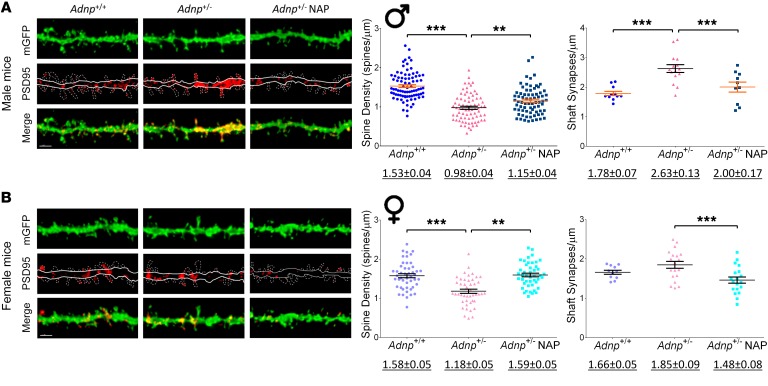Figure 1. Adnp+/– mice, compared with Adnp+/+ mice, display a significant decrease in hippocampal dendritic spine density that is ameliorated by NAP.
Average total spine density (males: Adnp+/+ n = 84, Adnp+/– n = 75, Adnp+/– NAP, n = 73; females: Adnp+/+ n = 48, Adnp+/– n = 45, Adnp+/– NAP, n = 45 dendrites/experimental group) and shaft synapse density (males: Adnp+/+ n = 11, Adnp+/– n = 15, Adnp+/– NAP, n = 10; females: Adnp+/+ n = 11, Adnp+/– n = 19, Adnp+/– NAP, n = 19 dendrites/experimental group). Total spine density was significantly decreased in both male and female Adnp+/– mice, with NAP significantly increasing spine density. Shaft synapse density was significantly increased in males and reduced by NAP in both sexes. A 2-way ANOVA with Tukey’s post hoc test was performed. Underlined numbers beneath the graphs represent the mean ± SEM. (A) In male mice, for total spine density, main genotype [F(1,290) = 62.278, P < 0.001] and interaction [F(1,290) = 31.385, P < 0.001] effects were found. For shaft synapses, main genotype [F(1,42) = 23.358, P < 0.001] and treatment [F(1,42) = 9.752, P = 0.003] effects were found. Tukey’s post hoc test revealed significant differences between Adnp+/+ and Adnp+/– mice (***P < 0.001) and between NAP- and vehicle-treated Adnp+/– mice (**P < 0.01 and ***P < 0.001). (B) In female mice, for total spine density, main genotype [F(1,183) = 9.327, P = 0.003], treatment [F(1,183) = 11.167, P = 0.001], and interaction [F(1,183) = 17.332, P < 0.001] effects were found. For shaft synapses, a main treatment effect was found [F(1,71) = 13.726, P < 0.001]. Tukey’s post hoc test revealed significant differences between Adnp+/+ and Adnp+/– mice (***P < 0.001) and between NAP- and vehicle-treated Adnp+/– mice (**P < 0.01 and ***P < 0.001). (A and B) Adnp+/+ data are reshown in Supplemental Figure 1, A and B. Scale bars: 2 μm.

